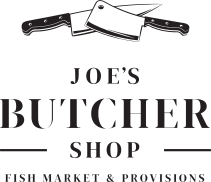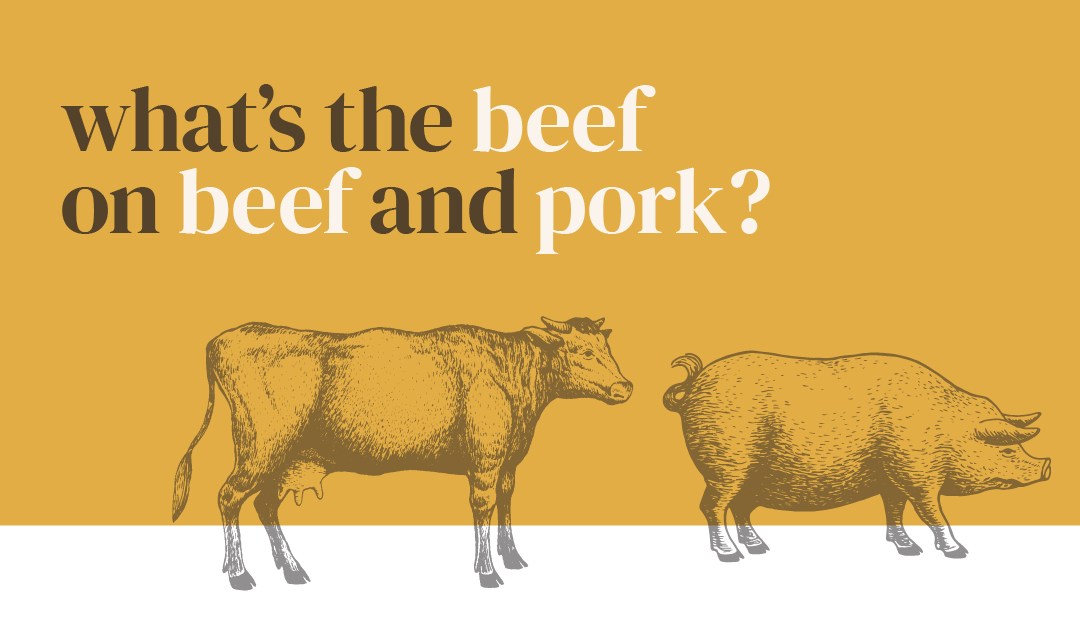We thank the many of you that took advantage of our Anniversary Sale and more recently our “Big Mistake” whole beef tenderloin sale. Meat bargains are few and far between these days, so it’s always wise to shop our sales and deals when you can!
Many of you asked about our “Big Mistake” sale and why it was short-lived (less than 48 hours). It’s worth noting that we weren’t fibbing. We DID over order beef tenderloin for the end of our Anniversary Sale and Valentine’s Day. We have to order/schedule slaughter of our boutique beef two weeks in advance, and we overshot demand considerably. In total, it was many dollars in inventory we had not intended to carry by any means! The sale was so short because your response to our low price was so swift, we ran out of what we could supply. And we couldn’t thank you enough!
As for the beef and pork price to consumers news for this summer, it is looking like it will be a stable to upward trend in pricing. So why the upward trend? Oddly, it’s little to do with the cost of beef and pork we buy it for at Joe’s, as it has been during this consumer price run up.
The government has sued many of the corporate beef producers for cooperative price fixing in 2020 that resulted in record beef prices to consumers. While we use smaller and local producers for most of our meats, their cost to us follows the lead of the big producers and increases to us when large producers increase their wholesale costs. In general, we pay a bit more for local beef than commodity beef for the marbling and sustainable, humanely raised practices (think more time on grass before grain, no antibiotics or growth hormones). As a result of the government's lawsuit with one of the “smaller” (but still very large) beef producers has already settled for tens of millions of dollars, leading us to believe that others may follow with even larger settlements. With the eye of Big Brother on them and a return to full employment post-COVID, we think beef costs to us while greater than 2019 costs, will stabilize this summer. But it does not mean pricing to consumers will drop, keep reading for more on this.
Right now, the news on pork costing to us for the summer also looks promising. Farmers are back to raising standard groups of hogs and large processing plants are getting back online in terms of capacity and employment.
We are concerned about product availability and higher pricing in late 2022 and early 2023. Why? The Asian Swine Flu (ASF) has started to appear in North American hogs.
For those not familiar with ASF, it is a strain of flu that decimated the entire hog crop of Asia, particularly China. China lost a substantial amount of their hogs due to ASF infection (there was no available vaccine) and ended up with record pork imports from the US and Brazil in 2019 and 2020. In China, pork is a prized product and widely consumed. Unlike the US, where we feed our hogs mostly silage, China’s main food ingredient for the hogs is corn. As China had to rebuild their hog stock in 2021, they discovered their methods for drying corn were not 100% modern resulting in a highly unusable and molded stored corn stock. This led to having to import 152% more corn from the US than any previous year on record. The large purchase of corn increased the corn prices dramatically for the beef farmers here in the US and was a major contributor (in addition to COVID consequences) to the increase in both costs to us and consumer US beef prices (we feed beef corn) in the last 18 months.
China finally contained ASF with natural immunity methods we will not generally use here in the US. There are animal medicine groups, such as Zoetis, that are diligently working on a vaccine for ASF. Such efforts are not expected to yield a widely available vaccine until 2023. That means the threat of ASF appearing in the US hog crop is real and eminent. There is no solid prediction on exactly when, and what percent of US hogs will get the ASF. While optimistic that our containment of the ASF will be better than China’s efforts (think washing down feed truck delivery, isolation of sick hogs, etc.), we do think that by the end of this year, and into next 2023, pork costs will increase because of ASF.
With beef and pork costs stabilizing this summer one would think pricing to consumers would look up as well. Here at Joe’s, we think costs to us for beef and pork are already looking better, but there are a couple new sheriffs in town that don’t care about improving cost conditions. They are called inflation and supply chain issues. They are driving big increases in pricing for small businesses like Joe’s. We have seen real wages in the last six months increase by 10% or more in Carmel. High school employees that work part time at Joe’s have seen their starting wage increass higher than 10%, as large groups such as Target and Walmart, implement a corporate-wide $16 an hour wage.
In our kitchen, many skilled prep chefs and kitchen workers left the industry during the pandemic for higher paying wages and benefits in large, corporate companies. This has made hiring, and finding, qualified workers a challenge and more expensive.
On the supply chain side, we have seen shortages in everything from paper goods to foil tins (this is one reason why we have not been able to sell homemade pot pies in the last two months). Staple items such as vinyl gloves, black steak paper for our case and freezer paper have increased as much as 100% during the past 18 months and it doesn’t look like it will drop back to pre-supply issue rates.
The result for us and other grocers is that to cover overhead/inflationary costs, we have to shift our gross margin percentages higher. This means that any cost decreases to us in beef and pork costs, will not be as evident to the consumer.
However, we will continue to run weekly sales and specials and plan to run more flash sales this year as supply allows. We think the price this summer to the consumer will remain higher in pork and non-steak beef items, while we look for consumer pricing in chicken and steaks to not move much, unless grocers see some relief in terms of supply chain and supply costs.
As always, we thank you for your continued support of Joe’s and for your understanding of the issues going on in the butcher world.

